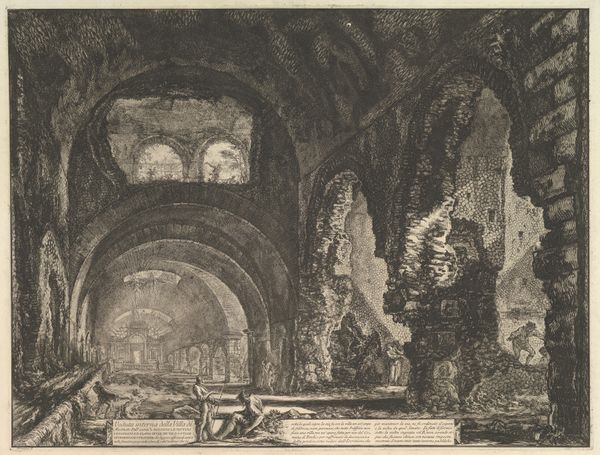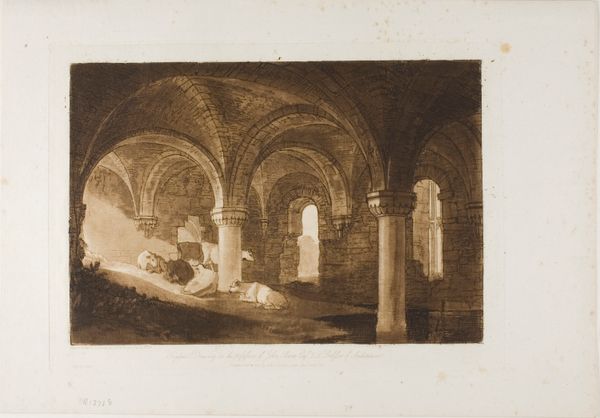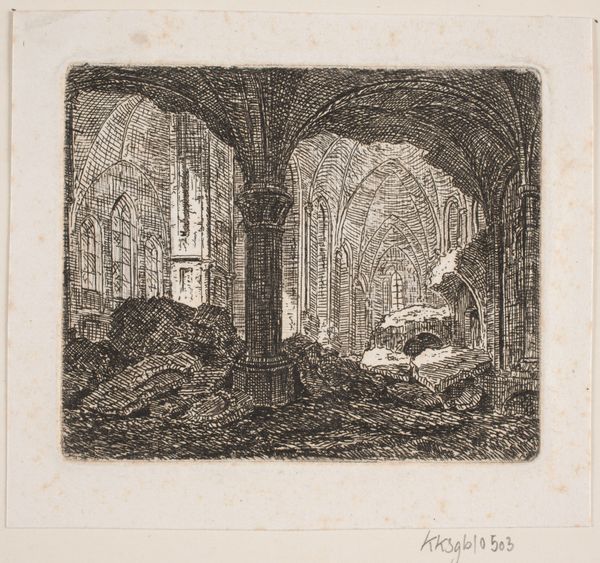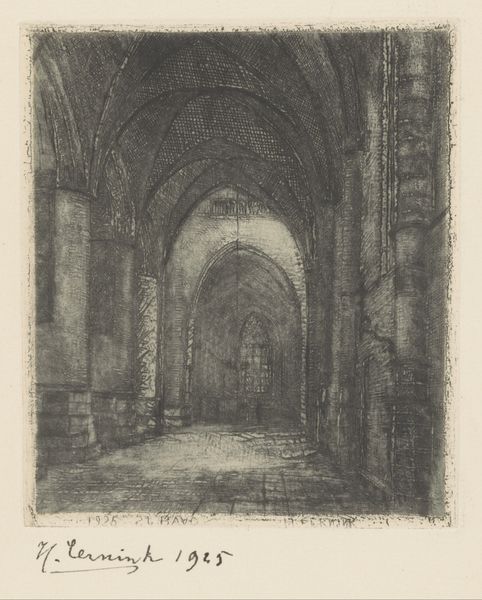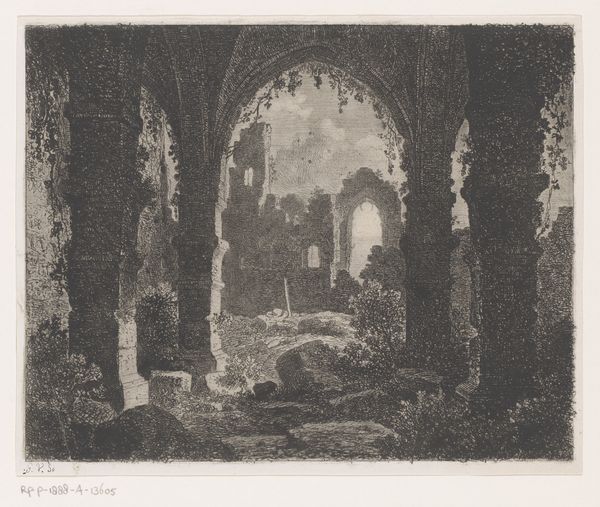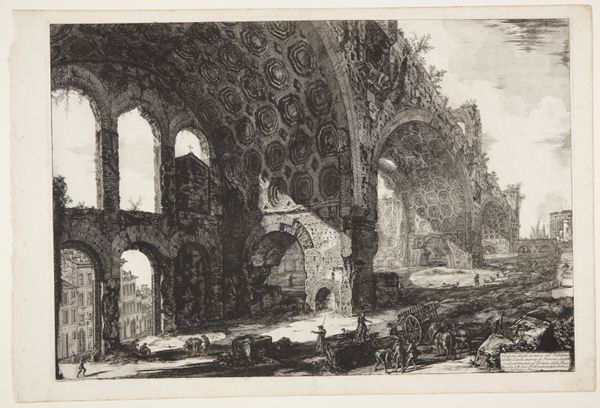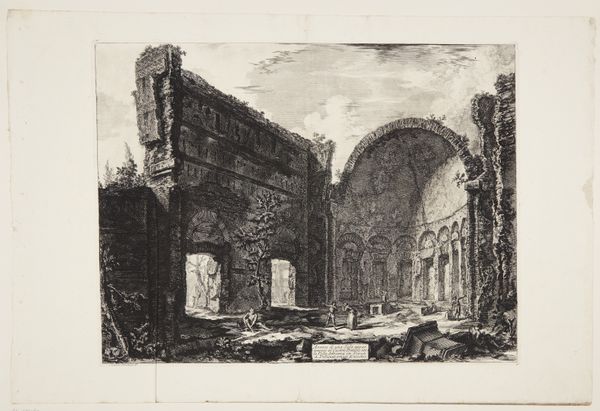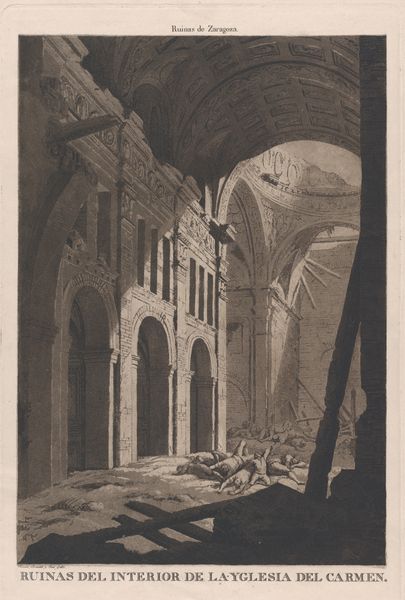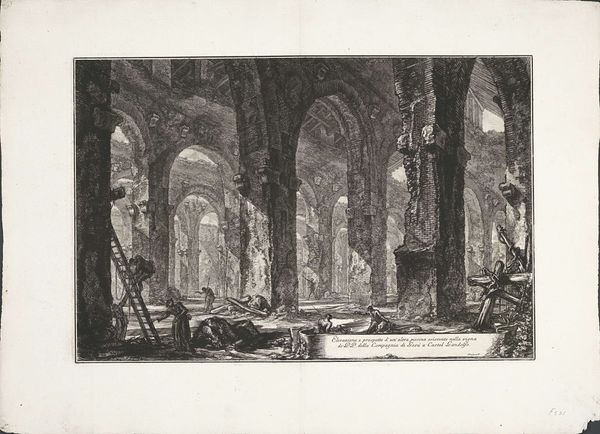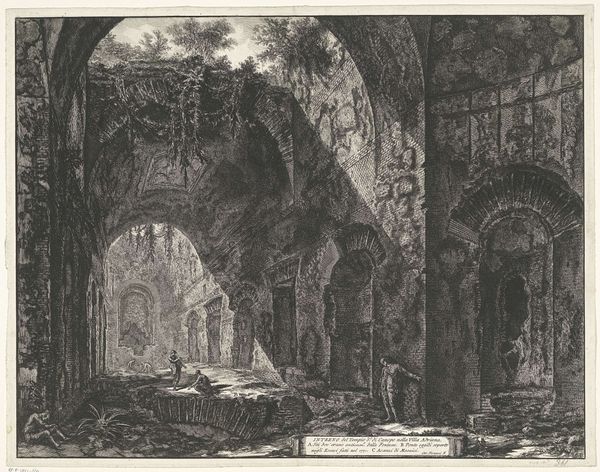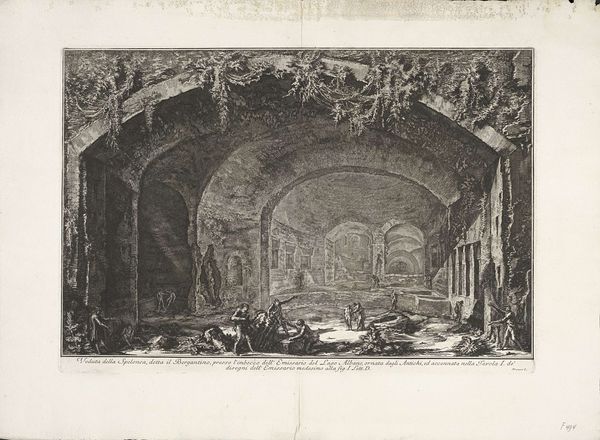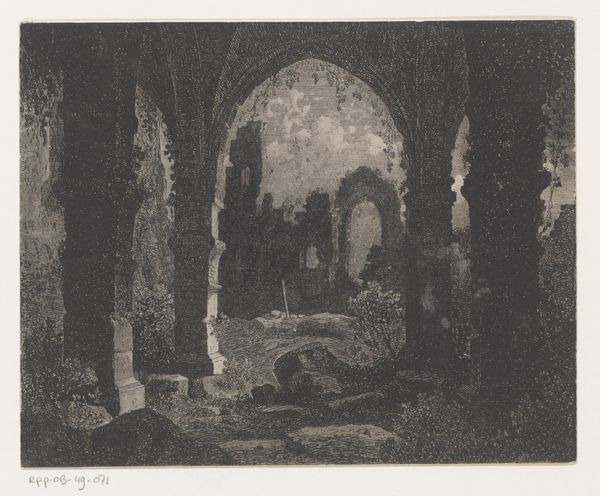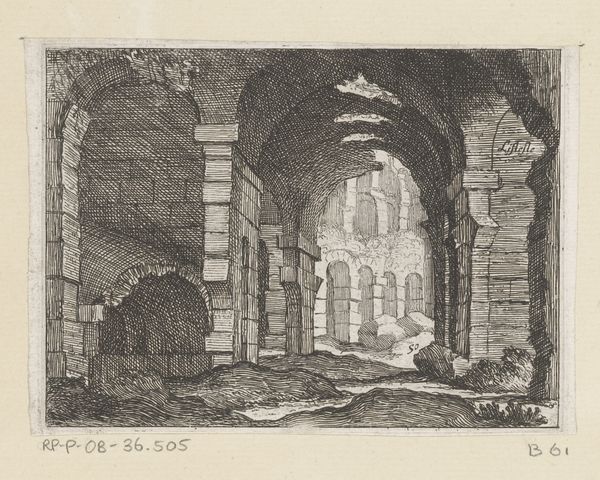
print, engraving
#
pencil drawn
# print
#
landscape
#
form
#
romanticism
#
line
#
cityscape
#
engraving
Dimensions: plate: 30 x 27 cm (11 13/16 x 10 5/8 in.) sheet: 41 x 32.7 cm (16 1/8 x 12 7/8 in.) overall (mat size): 55.9 x 40.6 cm (22 x 16 in.)
Copyright: National Gallery of Art: CC0 1.0
Curator: This is “Fountains,” an engraving dating back to 1822, created by George Cuitt the Younger. Editor: Immediately, I'm struck by the overwhelming darkness—like stepping into a long forgotten cavern. And then these repeating arches...it feels almost oppressive, yet weirdly inviting at the same time. Curator: It’s interesting you say "cavern." Cuitt was really interested in the intersection of natural forms with human-made structures and architectural themes and it could be the Romantic ideal. How we feel when experiencing something that is not touched by men, or only slightly. The strong lines and shadows here, a deliberate aesthetic choice, speaks of both grandeur and decay. Editor: The small figures really ground the work, dont you think? I mean it's all about scale. I love how small and fleeting the figures feel here against this architecture of human triumph Curator: Exactly, they almost fade in this dark setting, almost not human as to feel integrated into it! Look at the man in the corner to the left, his form, its darkness, and he merges in with rocks and fauna. We might reflect that, especially around the early 19th century, images of ruins carried a huge amount of social weight as testaments to earlier societies as ways of connecting back with previous eras of civilisation. And they have to find new purposes too, don’t they? They almost are waiting, it's all really well done. Editor: It also reminds me that even grand creations are transient. In that vein I like the technique of line he used in all of this to convey darkness! It does give that decay impression, so well done! I feel like a explorer when I look at it, you feel that? Curator: Totally. This is not simply a depiction of fountains, is it? It's a kind of meditative study on architecture itself and it plays with light and dark with an almost reverential regard. It shows more than just how things look; it's about how time impacts them, both shaping and altering everything. Editor: Yeah, beautiful! This piece kind of echoes how history and progress aren't linear, but kind of layered or cyclical instead, constantly being unearthed, reconsidered and re-seen again. Thank you, its insightful!
Comments
No comments
Be the first to comment and join the conversation on the ultimate creative platform.
